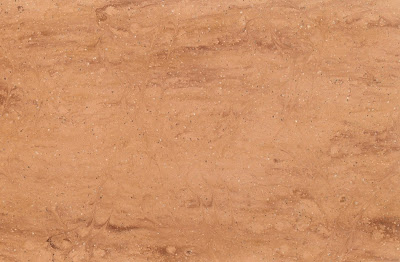Hi there, its Elizabeth from My Political Exile in Argentina. I want to thank Paul for giving me the opportunity to guest post on his great blog. My blog is definitely outside the realm of design and it is to Paul's credit, and his great sense of curiosity for many different things, that I am sharing with you just a little peek into my life as an expat, and more specifically, an expat living in Argentina.
I am writing you on a Sunday. Normally, most families in Argentina not just those from the suburbs are preparing for an asado. I wrote previously about this extremely important meal in this post. Well today we are going to friends for an asado. I need to run by the bakery to pick up some bread. Want to come for a walk with me? Let's go.
As we make the short walk into town, you will notice two curious features likely not found in a suburb near you. One is the little booths found at nearly every intersection (see in above disaster of a photo). These house the "Guardias" or the hired security guards that watch the comings and goings in the neighborhood. They became popular in the late 1980s after the various juntas that ruled Argentina were dismantled. One of the benefits of military rule was everyone was so scared there was no crime. With the return of democracy, there was more instability economically and socially, and as a result, crime increased. And while I would argue that given the number of people that live in the huge sprawl of Buenos Aires, crime is not a huge problem. While I have always felt very safe living here, Argentines are hyper vigilant and sensitive to security issues. Hence, these booths are manned 24/7. The guards are often retired, older (one of ours is mostly deaf) men that may not be a lot of help in a crisis situation. But they are sweet and they like to talk about the weather.
Another odd thing that you see in front of everyone's house is the metal basket that is set off the ground. They are for the NIGHTLY pick up of garbage. Its a beautiful thing.
My family and I live in one of what are referred to as the Northern Suburbs or Zona Norte. Due to the close proximity to the center of Buenos Aires or what people call the Capital, we live in a suburb with an urban vibe. We can walk just a few blocks to our "pueblo" where there is a vibrant, noisy center with a commuter train station. On a Sunday though, things are pretty sleepy. Everything shuts down for the weekend midday Saturday and stay closed until Monday morning. Today, only the bakery, the cafes and ice cream shops are open. There are quite a few people out window shopping and you will see cars using the usually truck congested Avenue to get where they are going.
I had to take a number in the bakery or panderia and wait as there were others buying fresh bread for their choripan. Argentines like there sweets and there many dulce de leche laden desserts to pick from. Here are the typical Christmas breads that you see in all the shops now.
With our business done in town, lets make a bit of a detour and walk down some of the residential streets near our home. Our town belongs to a larger municipality that was established in 1692 by guess who, Spanish priests!
It was pretty much a swampy outpost on the Rio de la Plata until the late 1800s when the railroads came to Argentina with the English(to build and run them)and their families. The area we live in was developed into a community for the first of the many Anglos that made their home in this era (many others went south to Patagonia to farm and fish). As a result of this particular immigration, a large percentage of the houses you see today in this area are English style and have orange trees planted on the tree lawns. This was to have oranges available for making marmalade.
As Argentina entered its golden age at the turn of the century, there was considerable growth in the suburbs and the English railroad homes had to share the block with other styled homes like the Spanish Colonial Rival homes. Many of these were built in the 1910s and 20s.There are very of these homes remaining in my neighborhood.
Labor costs have always been relatively low here and those that could afford to would tear down the existing house for the newest and best construction (and to some extent that is the way it works now). In the 60s and 70s people seemed to opt for what is called "chalet". It’s a pretty generic house.It has an efficient layout but architecturally boring and they can be very dark. From the same time period you also see several houses that are modern and like the one below in dire need of some windows.
Here is one of my least favorite styles of houses.
It’s a Faux French style that is favored by expats. I don’t know why. They are generally devoid of any character inside, lots of big windows and an obscene number of recessed lights. What they do have, that many Argentine homes don’t have, is a kitchen meant for more than just a maid to work in. Often houses, especially, the older larger ones have an after thought of a kitchen strategically situated near the dining room but having four walls and a door keeping the smells and activity separate from the lives of the residents.
Almost every block has what we call a "crack house". It’s actually more or less an abandoned house that the family estate can’t decide what to do with. The family will employ a maid to live there to keep squatters out. Often the house sits neglected for decades. Some of this is due to the chaotic nature of the economy here and people one day are above water and the next are not. Some of it has to do with the Napoleonic inheritance laws that make selling inherited property difficult. People pay cash for homes, so they won’t lose it to a bank here, but often if unable to keep it up or rent it out, it becomes what looks like a crack house.
Here is where a bunch of nuns are squatting. No, actually, that not true. Some rich German Argentine family willed their family home to an abbey. So there are nuns living there. They seem to be homebodies. Not a lot of action coming from here. Not even on the weekends. Its a very cool building.
Well its time to get back to the house with my bread. Get the kids out of the pool and get them dressed for our afternoon/evening meal at our friend’s home. Hope you enjoyed the walk. And again, Paul, thanks.















